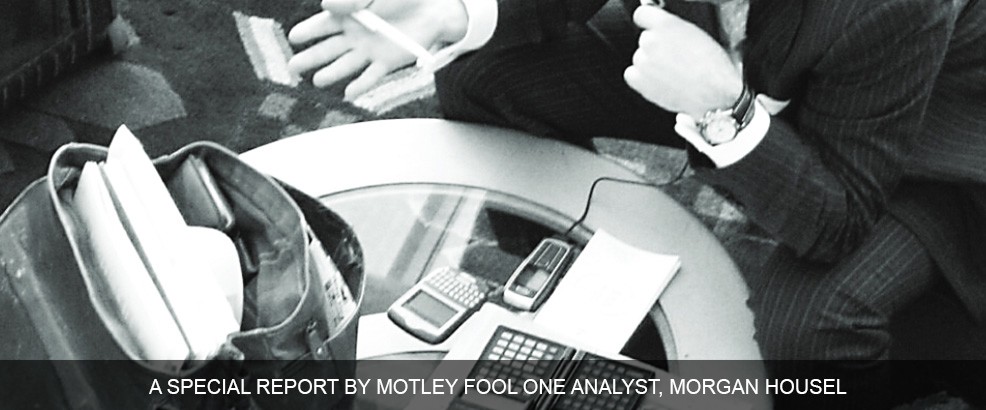The Motley Fool Managing Your Retirement How Much Are You Gonna Take
Post on: 16 Март, 2015 No Comment

Managing Your Retirement
There you sit with a finite pile of savings from which you will need to take all or most of the money to support your retirement spending. How much of that stash can you safely take each year to ensure it lasts your lifetime? Will you take the same amount annually? Will you adjust the withdrawal each year to offset purchasing power lost due to inflation? Will you dip into the principal during your lifetime or will you leave it to the kids? Will you just buy all the cool toys and vacations you’ve always really wanted, and let your slightly older self deal with the fallout a few years later? And have you really sat down and talked with your future self about this plan of yours?
These can be tricky questions (especially the one about sitting down and talking with your future self — there are psychiatrists that can help you out with this problem if you’ve really been doing it). But there’s lots of help out there. Various calculators are available online and in commercial financial planning software to help retirees cope with these issues. We’ve even got one or two on this site, and we’re constantly on the lookout to steal the best features from everyone else’s calculators to improve our own. Write us if you see anything you really think we should copy.
Anyway, most retirement calculators ask you to provide:
- your required yearly income
- an expected inflation rate
- your expected annual investment return
- your age or life expectancy
You provide that data, and with quick mathematical certainty the calculator will tell you either the starting value of the retirement nest egg required to support the desired income or the income that can be supported by your starting portfolio.

While these computations are useful — and some of the online toys out there can easily be played with for hours before you grow tired of seeing how much money you’ll have if you live to be 137 and the government increases Social Security payouts (ha!) — they do have some drawbacks. Perhaps the worst defect is that they rely on average rates of return and inflation. Over the long term, an average rate will work. That’s especially true when you’re still saving for retirement. Unfortunately, year-to-year results won’t be the same as the average, and to a retiree who is taking instead of saving money, those yearly variations can be devastating.
Ibbotson Associates tells us that for the years 1926 through 2000 the average annual S&P 500 total return was 11.1%, the annual average total return for long-term corporate bonds was 5.7%, and inflation averaged 3.1% per year. That’s not too shabby. That means a portfolio constructed of a 75% holding in the S&P 500 and a 25% holding of long-term corporate bonds would have produced an annual total return of 9.75% on average. As a retiree, I could look at that result and reasonably conclude I could take 7% of my portfolio yearly and not be fearful of running out of money. But — ain’t there always one of those? — what if you were unfortunate enough to retire on January 1, 1964?
According to Ibbotson, for the 15-year period ending on December 31, 1978, the S&P 500 total return averaged 5.4% per year, long-term corporate bonds averaged 4.0%, and inflation averaged 5.4%. Starting on January 1, 1964, with a 75% S&P 500 and 25% long-term corporate bond portfolio mix, you would have averaged a total return of only 5.1% per year through the end of 1978. That’s less than the average inflation rate in that period. Consider the first year’s 7% withdrawal rate you want in income that year. Consider increasing that income annually by the inflation rate. Then ask yourself if you could have survived those 15 years intact. Not a chance, Fool. You’d be eating government surplus cheese by now.
Obviously, when you start withdrawals is just as important as how much you take. Start in a period when the market is in a multiyear slump, and you could run out of money. Start at the onset of a sustained bull market like that of the past 15 years, and your children may very well inherit a substantial sum of cash. Therefore, the answer is very simple. Time your retirement withdrawals so they begin at the start of a long bull market.
All you have to do is get into a time machine and go back to about 1982 and retire then. That way you can take 7% to 10% each year and not go broke. Unfortunately, whether due to a massive governmental conspiracy, incompetence at NASA, or the simple realities of quantum physics, working time machines are in short supply. Similarly, few of us have Magic 8-balls that work reliably enough to see the start of prolonged market surges. Given, then, that our ability to predict the future is limited, what’s the maximum amount we can really take to ensure we don’t run out of cash?
One study compiled by three Trinity University professors — Philip Cooley, Carl Hubbard, and Daniel Walz — examined this issue by looking at historical annual returns for stocks and bonds from 1926 through 1995. Their results were published in the February 1998 issue of the AAII Journal in an article entitled Retirement Savings: Choosing a Withdrawal Rate That Is Sustainable. Using historical data published by Ibbotson Associates, the study looks at the impact of withdrawal rates from 3% to 12% on 5 portfolios ranging from 100% stocks to 100% bonds over all rolling withdrawal periods of 15, 20, 25, and 30 years from 1926 through 1995.
A successful portfolio was one that ended a particular withdrawal period with a positive value. The probability of success was measured based on the ratio of positive-value ending portfolios for a specific withdrawal period to the number of possible rolling periods for that category in the years studied. As an example, there were 56 possible 15-year withdrawal periods between 1926 and 1995. If in 31 of those periods a portfolio had a positive value after a final withdrawal of 12%, then a portfolio using that withdrawal rate for 15 years had a success rate of 55% (31 divided by 56, rounded to the nearest whole percentage). The study looked at both a fixed annual withdrawal based on the rate applied to the initial portfolio and at an inflation-adjusted annual withdrawal of that initial amount.
Not surprisingly, the study revealed withdrawal periods longer than 15 years dramatically reduced the probability of success at withdrawal rates exceeding 5%. The authors reached five general conclusions:
- Younger retirees who anticipate longer payout periods should plan on lower withdrawal rates.
- Bonds increase the success rate for lower to midlevel withdrawal rates, but most retirees would benefit with at least a 50% allocation to stocks.
- Retirees who desire inflation-adjusted withdrawals must accept a substantially reduced withdrawal rate from the initial portfolio.
- Stock-dominated portfolios using a 3% to 4% withdrawal rate may create rich heirs at the expense of the retiree’s current consumption.
- For 15-year or less payout periods, a withdrawal rate of 8% to 9% from a stock-dominated portfolio appears sustainable.
Additional commentary may be found in The Trinity Study by Scott Burns and the Retire Early website’s article What’s the ‘Safe’ Withdrawal Rate in Retirement? The Retire Early website recently conducted a similar study using an alternative database spanning the years 1871 through 1998. Found in The Retire Early Study on Safe Withdrawal Rates , it generally confirms the Trinity Study results.
All of these references agree that a safe withdrawal rate ranges between 4% to 6% of a retiree’s starting portfolio. Withdrawal rates above 5% increase the probability that a retiree will go broke in her lifetime. They also agree that the presence of bonds in the portfolio provides a measure of stability absent in an all-stock portfolio. And all agree that inflation-adjusted withdrawals fare best at lower to midlevel withdrawal rates.














